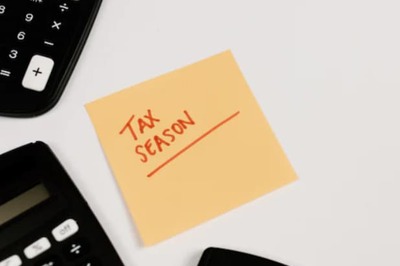
views
At the Make in India Week in Mumbai and celebrating the 98th anniversary of its independence, Lithuania presented Prime Minister Narendra Modi with a unique gift: a specially published small Sanskrit-Lithuanian dictionary. Its ambassador, Laimonas Talat-Kelpša, explains why India-Lithuania relations can never be lost in translation.
To the common Indian ear, the word 'Lithuania' is an unfamiliar one. Often it is mistaken for Ludhiana in Punjab, or something more exotic in other less geographical contexts.
However, in Europe Lithuania is a fast-rising star. It's been topping all the important international rankings recently. Thus, Lithuania has been ranked as the 20th best country for doing business in 2016. It is number eight in ease of starting a business, as it takes less than three days to start a new venture.
Lithuania has the fastest public WiFi in Europe and ranks as number one by the use of e-government solutions. Tax administration is fully covered by online applications, as is banking and other important areas of public and private economic activity.
In the UN Human Development Index, Lithuania occupies respectable 37th place (out of 188 nations), indicating it has one of the best social and education conditions in the world.
All these accomplishments have been achieved in only 26 years.26 years ago Lithuania was still part of the Soviet empire with its defunct state-run economy and corrupt public administration.
Everything that today makes our country a shining star had to be built from scratch.And India is a country which can understand and appreciate this transformation best.
The reasons why Lithuania is less known in India than in Europe or America are several.
First, we couldn’t have diplomatic relations before World War II, when Lithuania was free and India was not. Neither could wedevelop these tiesduring the Cold War, when the picture was diametrically opposite.
Also, the last 24 years since the establishment of our diplomatic relations have been rather passive in terms of high-level visits andlarge-scale initiatives. Relations between India and Lithuania were good but limited.
The time has come to change this reality. Especially now that Lithuania is an active member of the European Union and is about to join the Organization for Economic Cooperation and Development, a club of world’s leading economies, in a few years' time.
Likewise, India is stepping up its global presence and is actively seeking new partnerships to support and accelerate its economic growth and development. A few important tools are already at hand. Our linguistic connection has long been considered an academic topic only.
However, the striking resemblance of words and grammatical structures in Sanskrit and Lithuanian, which smoothly overlap into modern Hindi, leaves many listeners open-mouthed.
Both in Hindi and Lithuanian, we say dievas (देव) when we appeal to God, labas (लाभ) when we wish each other wealth and prosperity, ašara(अश्रु) when we cry tears of joy and sorrow, and sapnas (सपना) when we share our dreams and visions.
Common words are rooted in practically all the areas of everyday life. Importantly, this connection generates such a positive energy at the grassroots level that it would be unwise to let it go untapped.
Both politicians and businesses could use these sympathies while building larger international contacts or making decisions to trade and invest.
With this idea in mind,a small Sanskrit-Lithuanian dictionary has been published and presented to Prime Minister Narendra Modi during the Make in India Week program in Mumbai few days ago.
Secondly, we witness a dramatic rise in the number of Indian students seeking education opportunities in Lithuania. The growth over the last three years has been ten-fold.
Thus, the number of Indian students at Lithuanian universities may reach 1,000 by the end of this year, making Indian presence in the country even more prominent.
Third, Indo-Lithuanian trade is experiencing a robust growth. In 2015, it crossed EUR100m mark and has increased by 66 per cent. Yes, the trade could be larger. The conclusion of Bilateral Trade and Investment Agreement between India and the European Union will undoubtedly facilitate its growth.
But what is important today, however, is that within the existing scope our nations actively trade in high-value goods like scientific lasers and pharmaceuticals, which is one of the reasons why our commercial links have been expanding despite thedifficult economic situation worldwide.
The coming years will be full of challenges but also opportunities. In 2017, India and Lithuania will celebrate 25 years of their diplomatic relations. It will also be a year of India’s 70th anniversary. In its turn, Lithuania will celebrate its Centennial in 2018.
We have good reason to intensify our exchange of high-level visits, supported by business delegations and extensive cultural programs. A few important documents in such areas as Agriculture, Cultural Exchange, Extradition, and Science & Technology, are already under negotiation and hopefully will be ready soon.
There is also hope that an Indian resident mission will open soon in Lithuania, as this decision has been under consideration for the last 10 years. Perhaps Prime Minister Narendra Modi will choose to become the first Indian leader to visit Lithuania and the Baltic States, to signify the growing intensity of our ties. We already have sapnas (dreams) in common. Let us work together to make those dreams come true.




















Comments
0 comment